
What are average sod installation prices? Learn how much sod costs in Atlanta, GA, based on factors like square footage, land prep, land condition, and more.
These plants are outstanding in their field


When you think of the prairie, amber waves of grain likely come to mind, but the truth is, the prairies are bursting with color and texture variations. Today’s prairie-style gardens give a nod to those rolling hills of colorful grass with a modern gardener’s twist: think silvery-blue blades and deep purple blooms, soft floral pinks, and showstopping fall color. If you’re thinking of adding some prairie plants to your own little house, look no further than these nine prairie grass landscaping ideas, many of which are native grasses.
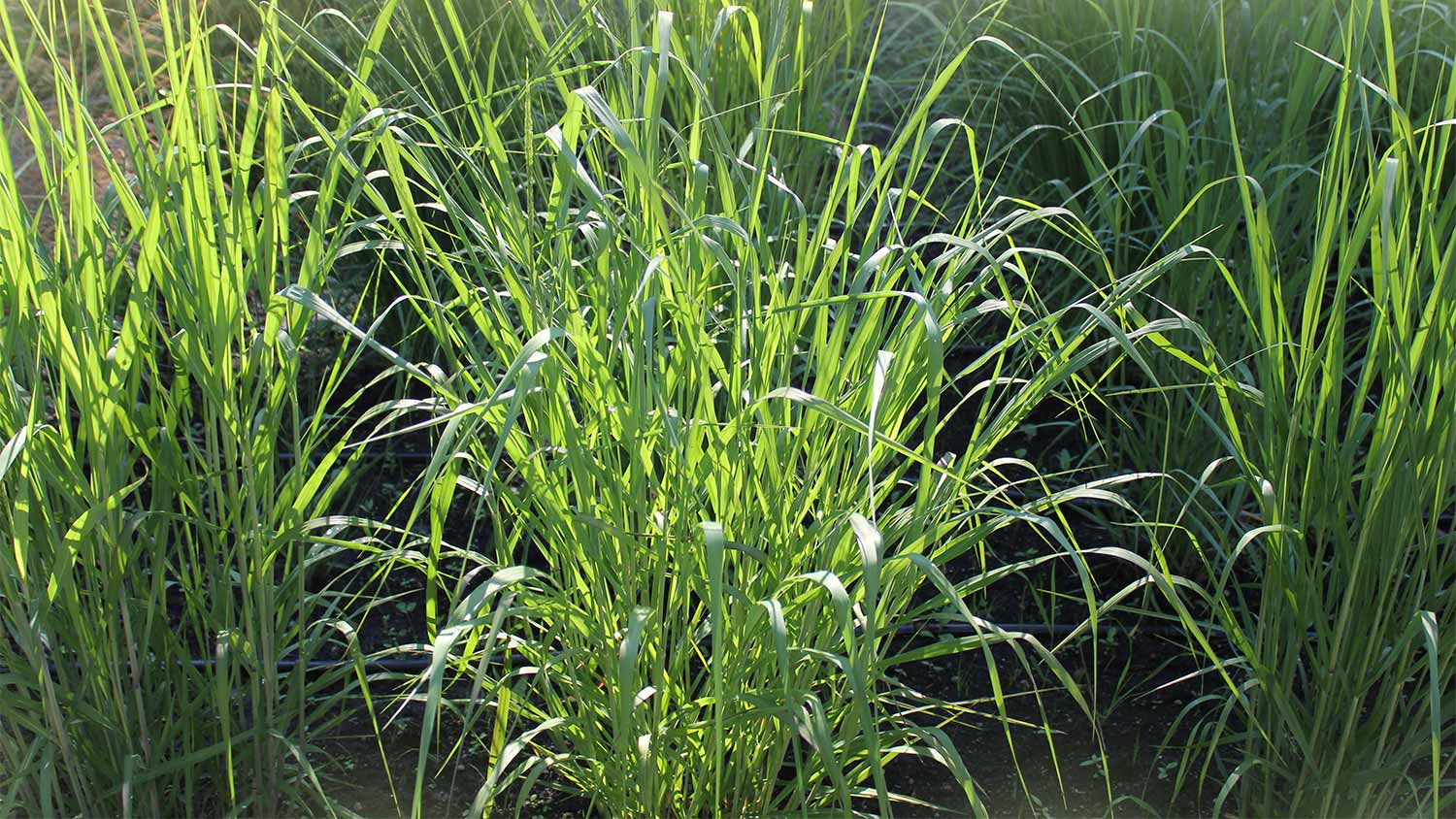
Hardiness zones 4 to 9
Two to 4 feet wide, 4 to 7 feet tall
Switchgrass is a North American native prairie grass with foliage ranging from bright green to gray-green to silvery blue with midsummer blooms of airy, reddish-purple, or pink flower panicles. As fall approaches, the flowers turn brown, and the leaves put on a show. ‘Prairie Fire’ turns a brilliant red, ‘Shenandoah' changes to a gorgeous maroon color, and ‘Heavy Metal’ a bright yellow. The seeds that drop in the fall also attract songbirds.
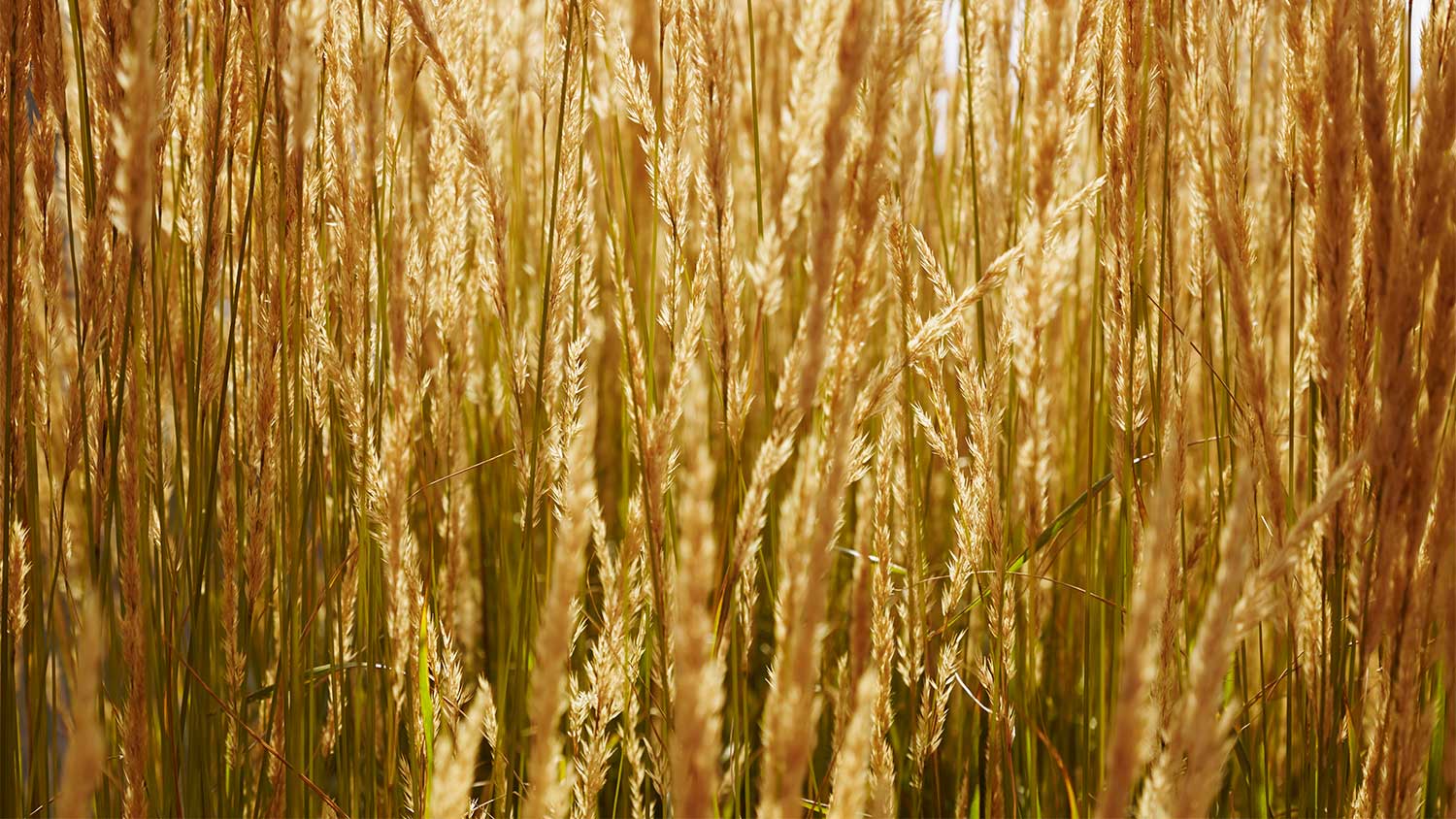
Hardiness zones 4 to 9
Two feet tall and wide, with flower spikes to 6 feet
Feather reed grasses have a relatively narrow but upright growth, adding vertical interest to a cottage or prairie garden bed. Known for their reddish-brown, feathery flowers that turn golden in the fall, the flower spikes can grow up to 6 feet high. Feather reeds are a prized addition to any cutting garden and can become a centerpiece for a fall floral arrangement. Both ‘Karl Forester’ and ‘Avalanche’ are extremely popular for perennial gardens and look at home among prairie wildflowers such as purple coneflowers (Echinacea) and blazing stars (Liatris).
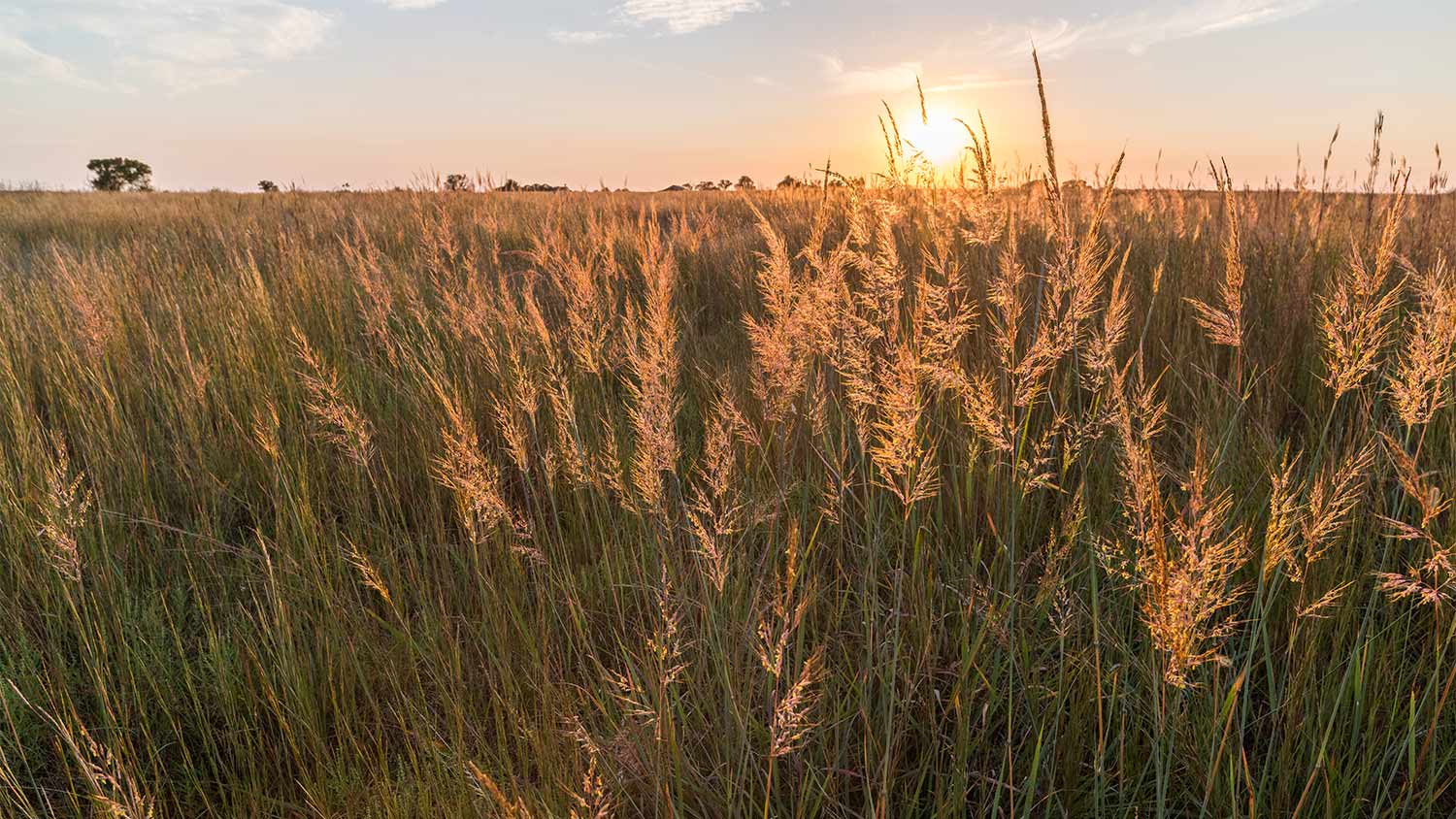
Hardiness zones 4 to 9
Three to 5 feet wide, 2 feet tall, with flower spikes to 6 feet
Also called Wood Grass, Sorghastrum nutans is another true prairie grass native to North America. Even planted alone, it can be stunning thanks to the contrast of the gray-green or silver-blue foliage and copper blooms. If you’re looking for gorgeous home garden ideas and want an absolute showstopper for your garden, look for ‘Sioux Blue,’ which has even brighter blue foliage that transforms from yellow to orange in the fall. Like feather reed grass, the tall flower spikes make this plant a great addition for late summer and fall floral arrangements.

Hardiness zones 4 to 9
Two to 3 feet wide and tall
This blue-gray grass makes a nice contrast in the garden even without its graceful flowers, which give it a fountain-like appearance. The bluish color really pops when planted in front of or next to a burgundy-leafed plant such as a purple hop bush (Dodonaea). Because it’s more compact than other grasses, it’s a good choice for borders. In places with mild winters, it can remain evergreen.

Hardiness zones 3 to 9
Two feet wide and tall, with flower plumes from 4 to 8 feet tall
Sometimes called Turkeyfoot because of the seedhead, big bluestem is another gorgeous native North American prairie grass. The name bluestem comes from the beautiful blue-green color of the stems, which turn shades of red in the fall. ‘Blackhawks’ is a beauty for the garden bed as it goes red in the summer then darkens to a near-black shade of purple in the fall.
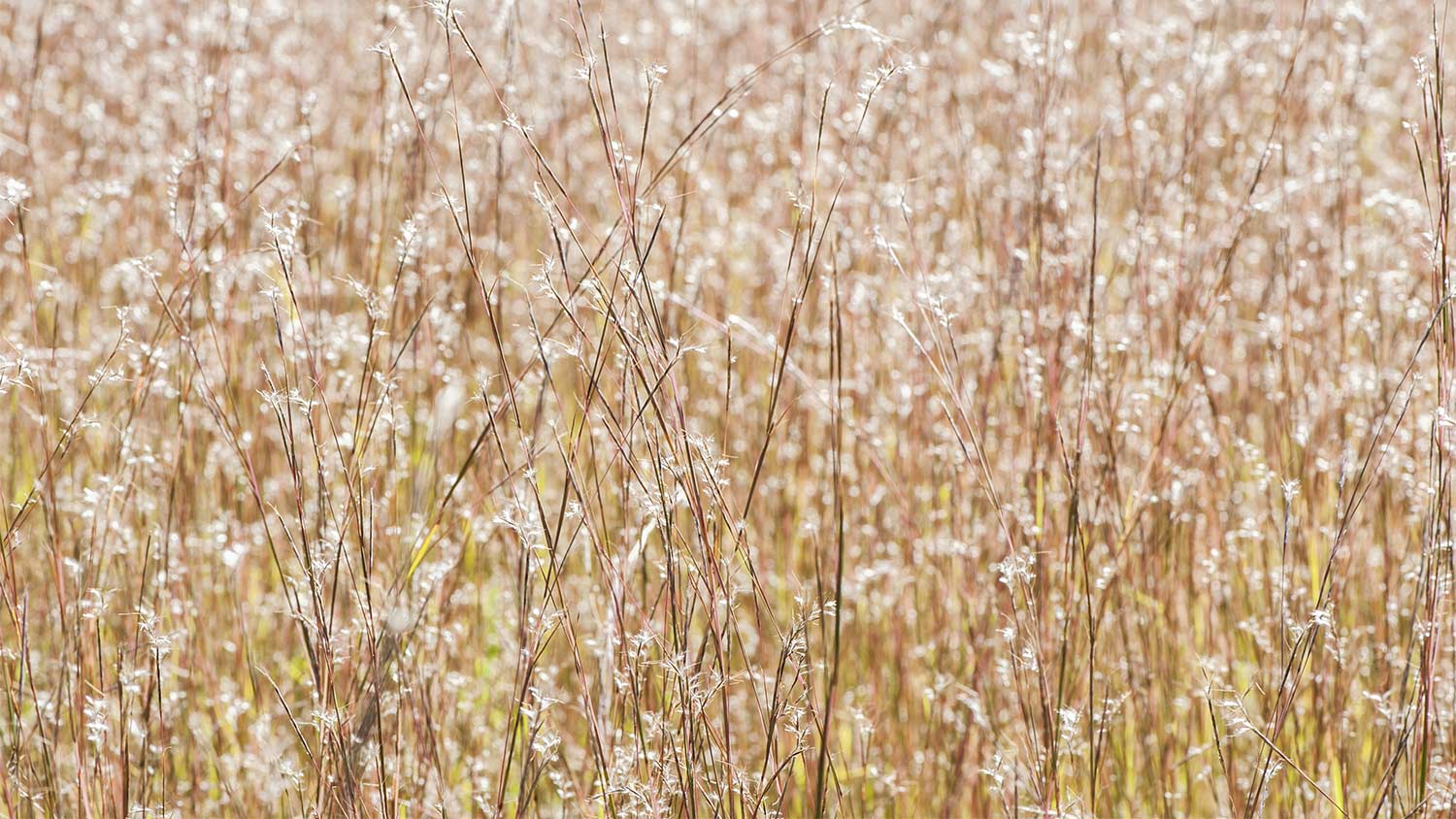
Hardiness zones 3 to 9
Two to 4 feet tall, 1 to 2 feet wide
This smaller native North American prairie grass has foliage in various shades of green, gray-green, and blue-gray. The rule of thumb with little bluestem is the bluer the stems, the deeper the red in the fall. Look for ‘The Blues,’ which transform from light blue to deep burgundy. Non-fussy gardeners can rejoice; this grass thrives in poor soil, doesn’t like mulch, and loves lots of sun.

Hardiness zones 3 to 9
Two to 3 feet wide, 18 inches high, blooms to 3 feet tall
Prairie dropseed is a smaller, slower-growing native North American grass with a delicate, arching appearance that looks striking near an upright, structured grass like a feather reed grass. Although this grass is more compact than some, it holds a big bonus for gardeners: the flowers are incredibly fragrant. They also turn gorgeous bronze in the fall.

Hardiness zones vary
Sizes vary
Muhlenbergia is a North American grass with varieties native to nearly every region in the country, including native California grasses and Midwestern prairie grasses. Because of the range of indigenous habitats, even the cultivars can vary wildly from 2 to 6 feet or more. In addition, their cold tolerance can be vastly different, hailing from northeastern winters to southwestern summers.
The good news is no matter where you live, there's a Muhly grass that will look stunning in your garden. Muhlenbergia produces gorgeous, soft plumes that range from creamy-white to deep purple. The most popular varieties of muhly grass are those that get rosy pink blooms, such as Monrovia’s ‘Regal Mist’ and purple-hued ‘Plumetastic.’
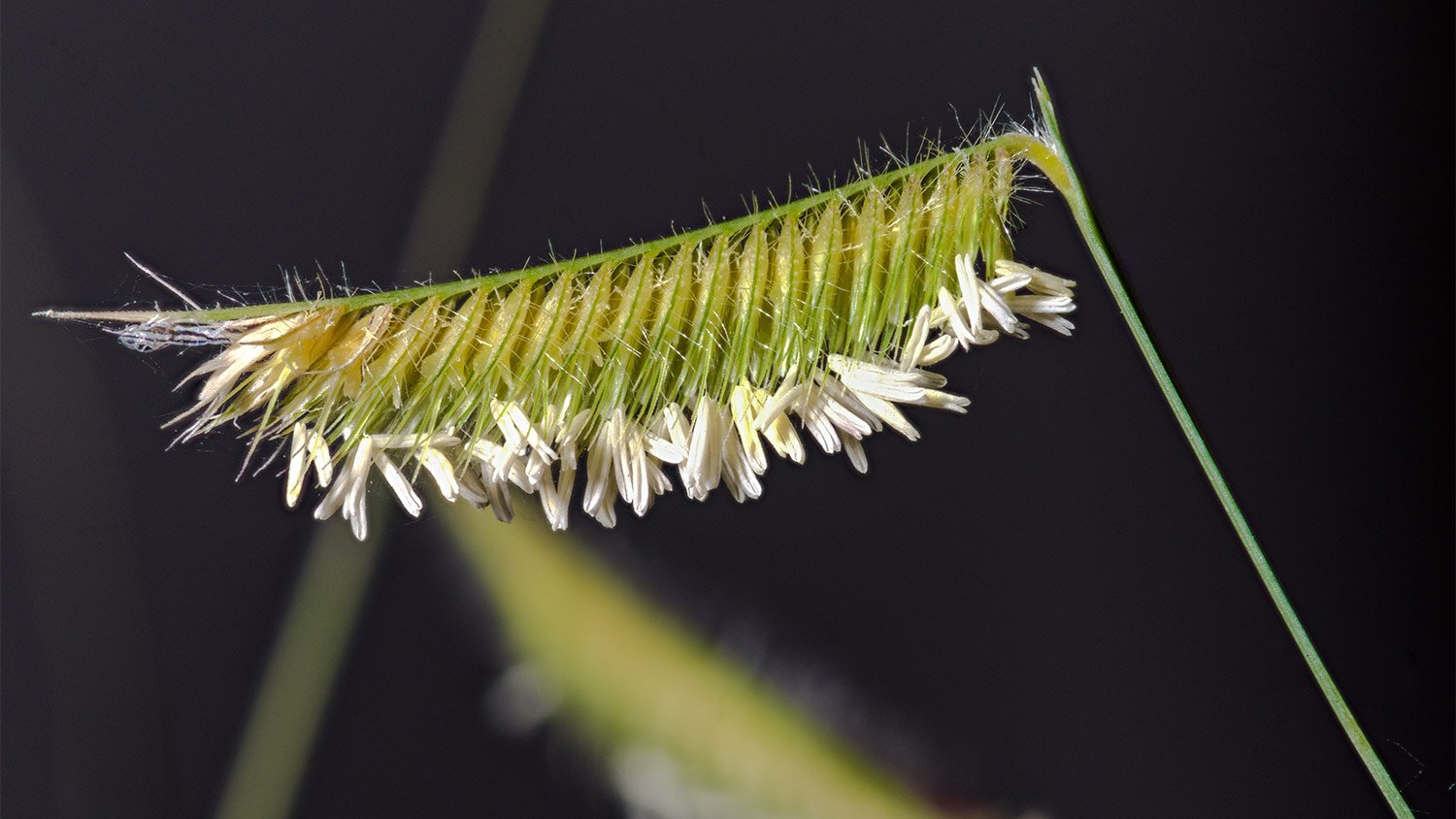
Hardiness zones: 4 to 9
Three to 4 feet wide and as tall
This beautiful clumping grass will add texture and interest to any garden thanks to its unique flowers that grow nearly horizontally from the stiff bluish-green stems. Native to North America, interesting cultivars have emerged, including the fab ‘Blonde Ambition,’ which has chartreuse inflorescences that fade to light brown over summer but remain on the plant throughout the winter. If you’re looking for a plant that’s a conversation piece, this is the one to add to your garden.
If you’re considering adding native grasses to your garden, you’ll be happy to know that many of the native grasses listed here are delightfully low maintenance. Native grasses can be drought-tolerant, forgiving of poor soil, and even thrive in it. Some ornamental grasses fit nicely in the prairie-style garden, and many of the same rules of care apply to native grasses.
However, it’s important to remember that new hybrid varieties may have different requirements to shine in your garden. Your best bet is to visit your local nursery or garden center or find a local landscaping professional who specializes in native habitats or prairie gardens to discover the many possibilities for your yard. Pros can help you bring your prairie grass landscaping ideas to life.
From average costs to expert advice, get all the answers you need to get your job done.

What are average sod installation prices? Learn how much sod costs in Atlanta, GA, based on factors like square footage, land prep, land condition, and more.
.jpg?impolicy=leadImage)
Landscaping your yard adds curb appeal and expands your home’s living space into the outdoors. Learn how much landscaping costs for various projects.

Leveling your yard can help with drainage and prevent damage to your home. Learn the cost to level a yard in Atlanta, GA, and what factors can affect the price.

If you need to get rid of a bush, here’s how to handle this project in a few simple steps. Follow our step-by-step instructions.

The cost of topsoil varies based on the size of the area and the depth, as well as prep and labor. This article covers everything to factor into your budget.

While it’s possible to DIY build a retaining wall, several pros have advanced knowledge of hardscaping and building. Learn who to hire to build a retaining wall.